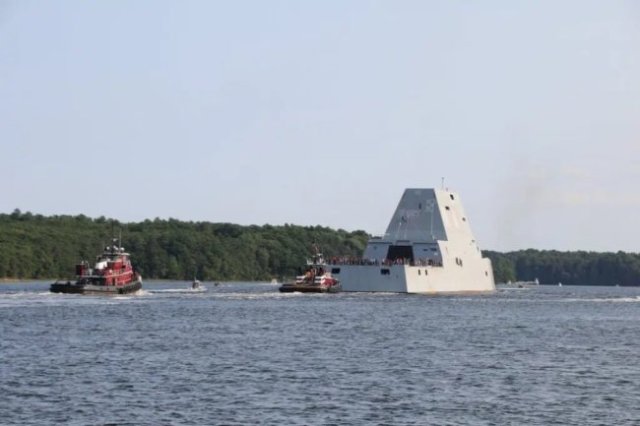The third and last destroyer of the Zumwalt type went to sea for sea trials.
The ship was built at the Bath Iron Works shipyard in Maine and was named Lyndon B. Johnson (DDG 1002). The ship is distinguished by a bizarre shape with a nose sloping into the sky, a pyramidal superstructure and flat sides. This is a tribute to inconspicuousness. For the sake of stealth technologies, many elements of the superstructure are made of cork wood, and the ship is painted with a ferrite composition that absorbs radio waves.
The lead destroyer of the series, DDG 1000 Zumwalt, has experienced many emergencies due to failures of the high-tech power plant. In 2016, the ship lost speed after water penetrated two of the four bearings of the propeller shafts, and crashed into the wall of the Panama Canal.
Initially, it was planned to install a railgun on the ship, but due to the lack of a suitable sample, it was replaced with a 155-mm long-range LRLAP gun hidden under a stealth casing. However, it soon became clear that its active-rocket projectiles flying at 148 km are more expensive than Tomahawk missiles, which have an order of magnitude greater range and power.
Opponents of the Zumwalt project estimated that the construction of one destroyer costs twice as much as the conversion of an Ohio-type submarine-despite the fact that the submarine carries twice as many cruise missiles and has better stealth. As a result, the program for the construction of stealth destroyers has been reduced to three units.
Anton Valagin

